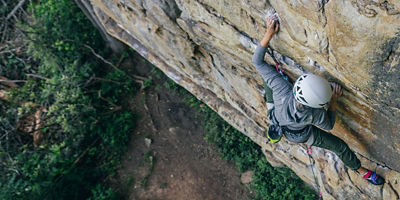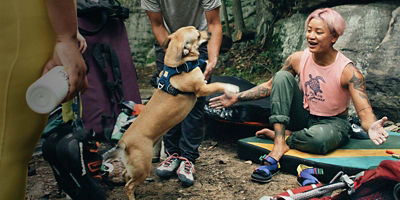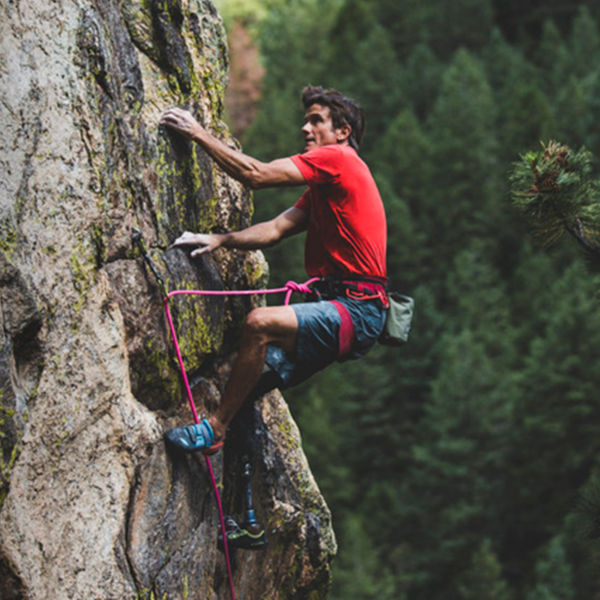
In climbing, every overhead move—from delicate crimps to big throws—requires stability and precision initiated from the shoulders. Doing shoulder strengthening exercises regularly can help you execute those movements with more control, hold difficult positions for longer, and stabilize on the wall before and after big moves.
The other—perhaps more compelling—rationale behind shoulder exercises for climbers: injury prevention. Many climbers have well-developed deltoids and upper back muscles but neglect their rotator cuffs, which are the bundles of little muscles that hold your shoulders in place. When your bigger muscles are powerful enough to create a lot of force, but your smaller stabilizing muscles aren’t strong enough to take that force, that can lead to injury.
In fact, according to a 2018 analysis by a team of international researchers, about 17 percent of all climbing injuries affect the shoulders, making them the second-most injury prone body part after fingers. And that’s nothing to brush off. After all, shoulders can take a really long time to heal. According to a 2017 study, it took the average climber more than 27 months after rotator cuff surgery to regain their previous level of climbing proficiency—if they regained it at all.
The good news? You can prevent injury by sprinkling a few shoulder strengthening exercises into your routine. The below workout only requires about 30 minutes and minimal equipment. Do it at least three days a week, on its own or after climbing, for strong, resilient shoulders. (If you’re short on time or new to shoulder strengthening, pick three exercises. Do the others during your next training day.)
IYTsProtocol: 3 sets of 5 reps, with 1 minute of rest between each set. Do all three movements (I, Y, and T) consecutively to complete one rep.
Equipment: Incline bench, 2- to 5-pound dumbbells to start. If this feels easy, add up to 5 pounds per arm; strive for the max weight you can do with good, controlled form.
I: Lay chest-down on a 45-degree bench with either your knees on the seat of the bench or your feet on the floor to either side. Hold a lightweight dumbbell in each hand, arms hanging down on either side of the bench, thumbs pointing forward. Keeping elbows straight, reach for the wall in front of you, thumbs pointing toward the ceiling, until your arms are fully extended alongside your ears and in line with the rest of your body (like an “I”). Then, lower back to your starting position.
Y: Next, raise your arms up and away from your midline, until each one forms about a 45-degree angle to your neck (a “Y”). Again, they should end up in the same plane as the rest of your body, your elbows about level with your ears, thumbs pointed up. Then, lower back to the starting position.
T: Finally, raise your arms out laterally from your body, thumbs pointed forward toward the wall in front of you, until your arms form right angles to your sides (creating a “T”). Then, lower back to the starting position.























